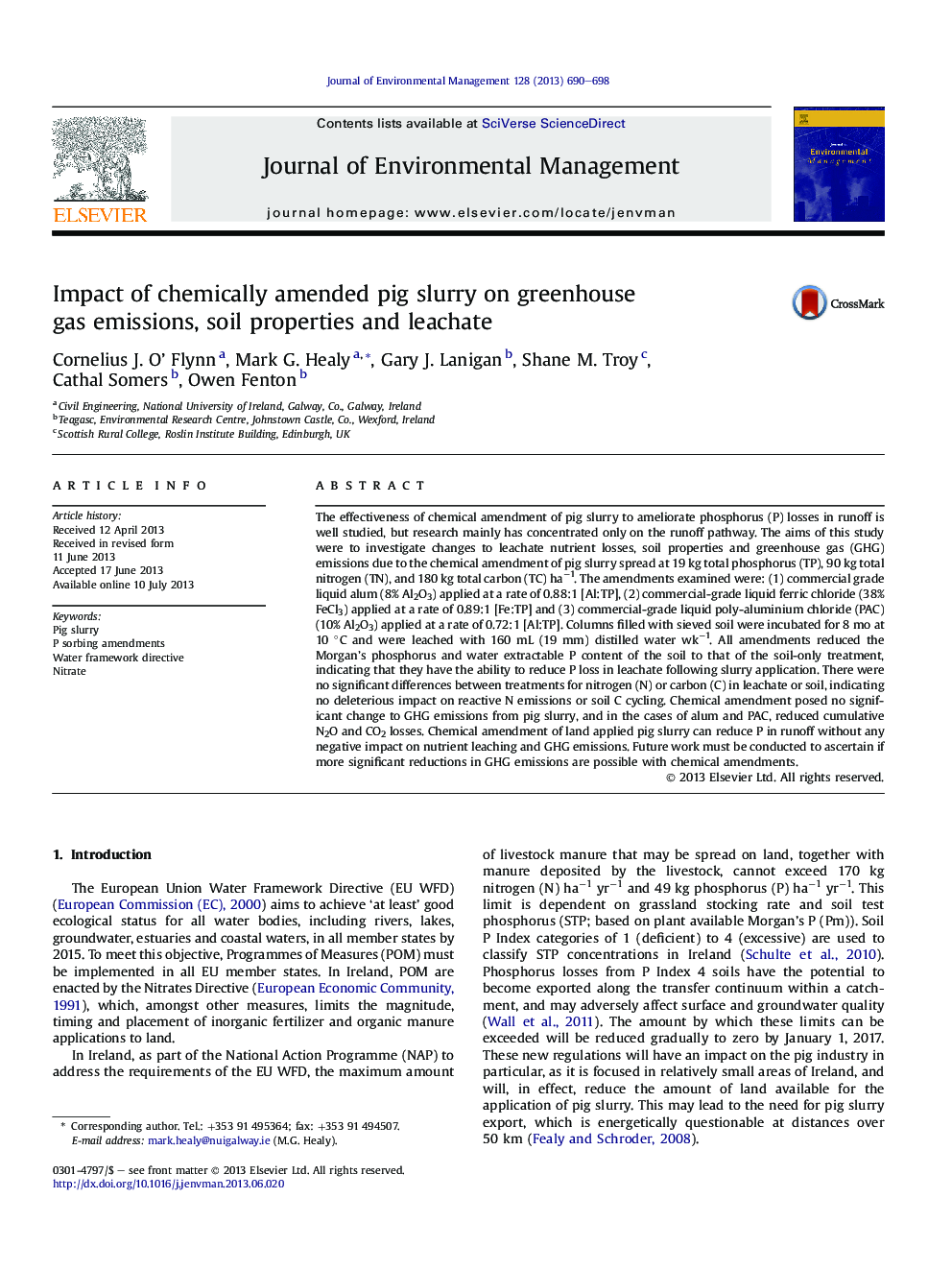| Article ID | Journal | Published Year | Pages | File Type |
|---|---|---|---|---|
| 7484410 | Journal of Environmental Management | 2013 | 9 Pages |
Abstract
The effectiveness of chemical amendment of pig slurry to ameliorate phosphorus (P) losses in runoff is well studied, but research mainly has concentrated only on the runoff pathway. The aims of this study were to investigate changes to leachate nutrient losses, soil properties and greenhouse gas (GHG) emissions due to the chemical amendment of pig slurry spread at 19 kg total phosphorus (TP), 90 kg total nitrogen (TN), and 180 kg total carbon (TC) haâ1. The amendments examined were: (1) commercial grade liquid alum (8% Al2O3) applied at a rate of 0.88:1 [Al:TP], (2) commercial-grade liquid ferric chloride (38% FeCl3) applied at a rate of 0.89:1 [Fe:TP] and (3) commercial-grade liquid poly-aluminium chloride (PAC) (10% Al2O3) applied at a rate of 0.72:1 [Al:TP]. Columns filled with sieved soil were incubated for 8 mo at 10 °C and were leached with 160 mL (19 mm) distilled water wkâ1. All amendments reduced the Morgan's phosphorus and water extractable P content of the soil to that of the soil-only treatment, indicating that they have the ability to reduce P loss in leachate following slurry application. There were no significant differences between treatments for nitrogen (N) or carbon (C) in leachate or soil, indicating no deleterious impact on reactive N emissions or soil C cycling. Chemical amendment posed no significant change to GHG emissions from pig slurry, and in the cases of alum and PAC, reduced cumulative N2O and CO2 losses. Chemical amendment of land applied pig slurry can reduce P in runoff without any negative impact on nutrient leaching and GHG emissions. Future work must be conducted to ascertain if more significant reductions in GHG emissions are possible with chemical amendments.
Related Topics
Physical Sciences and Engineering
Energy
Renewable Energy, Sustainability and the Environment
Authors
Cornelius J. O' Flynn, Mark G. Healy, Gary J. Lanigan, Shane M. Troy, Cathal Somers, Owen Fenton,
